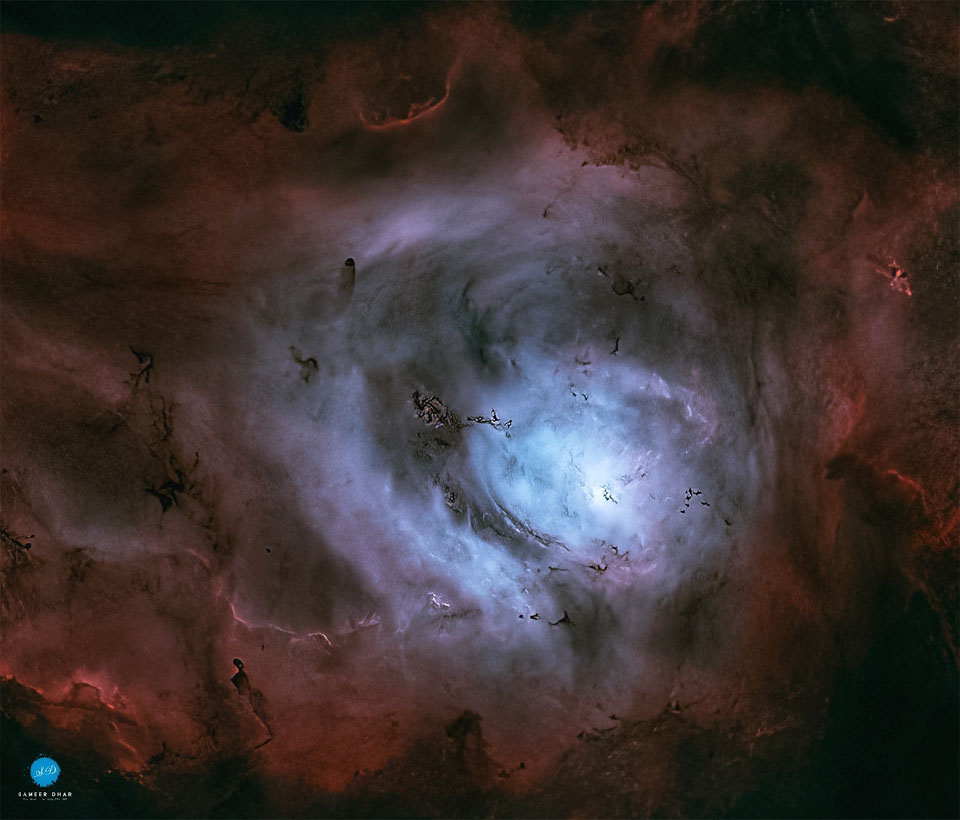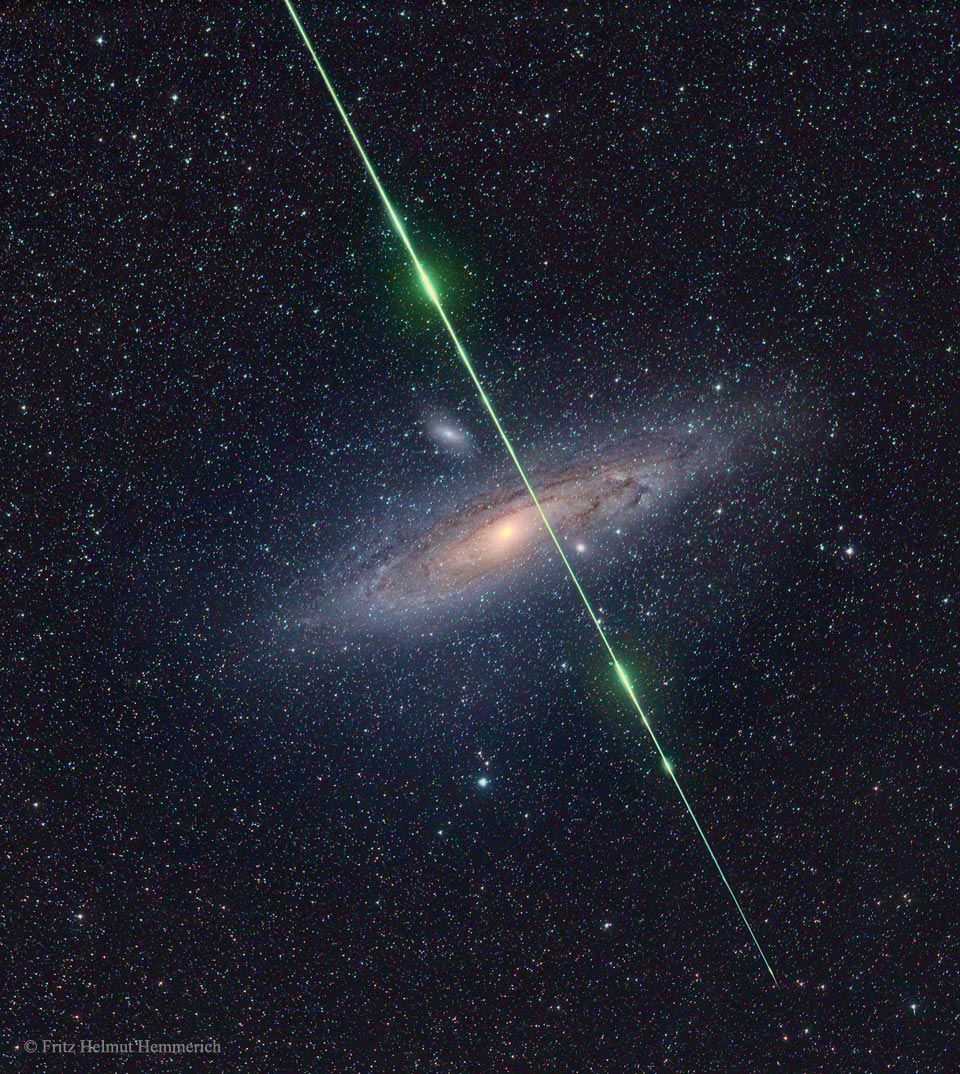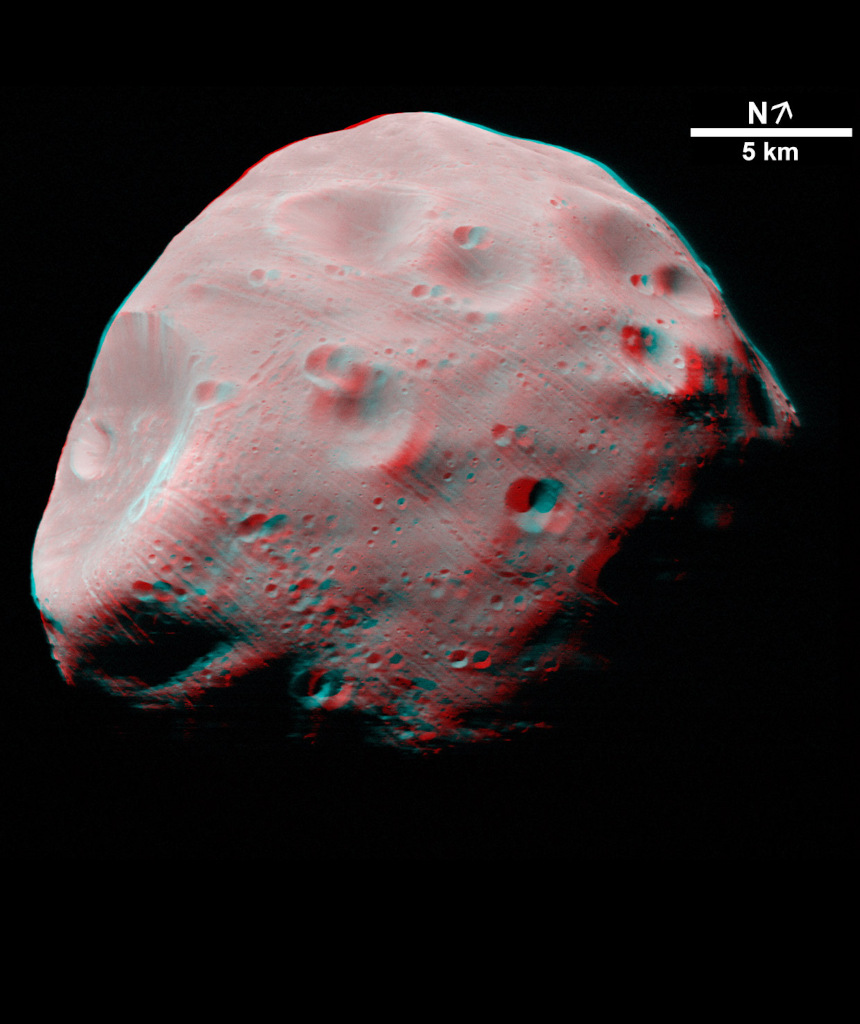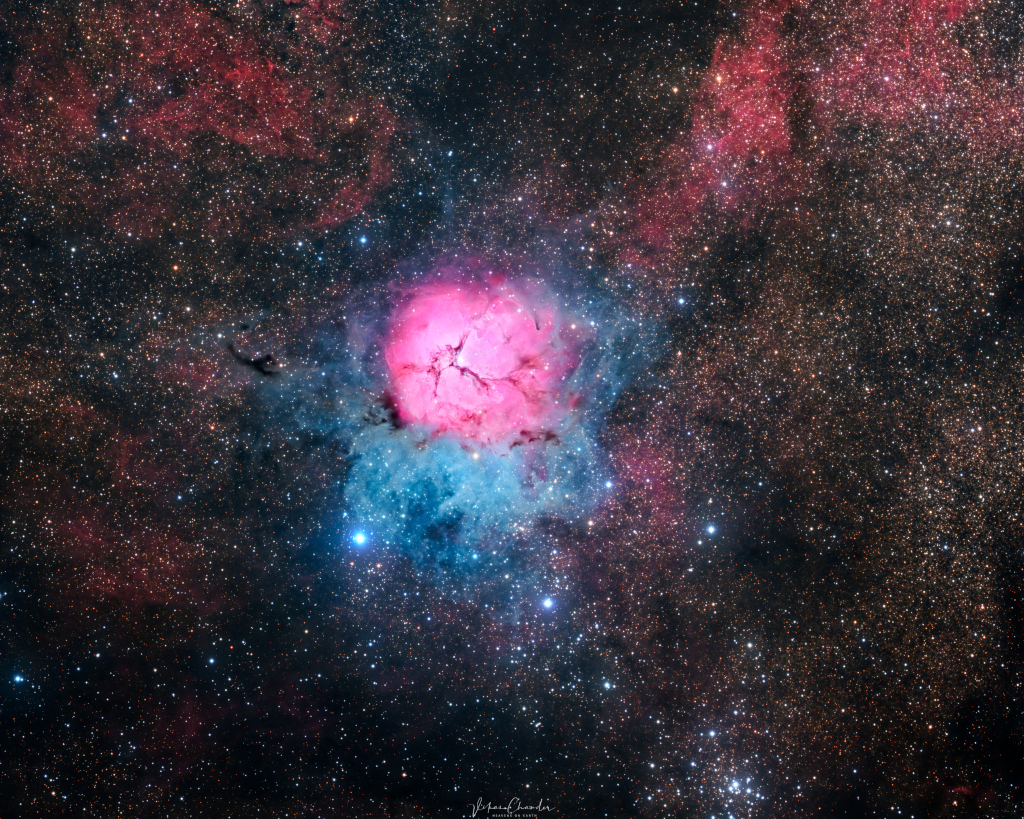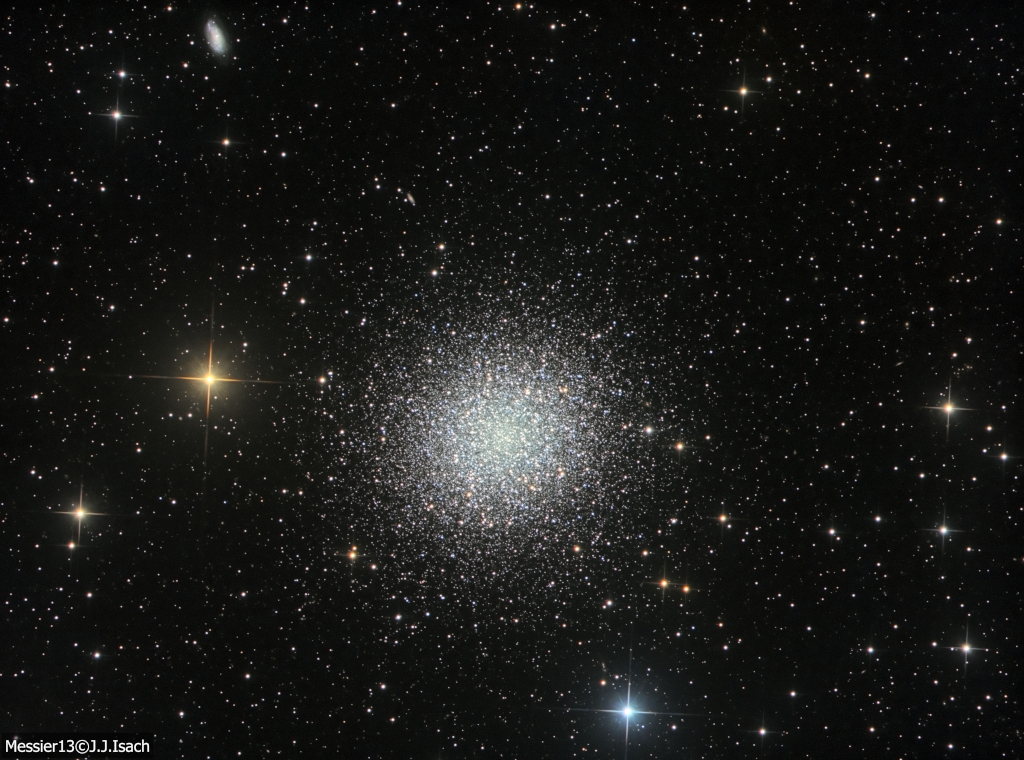Nombre total de pages vues
09/08/2022
ASTROPHOTOGRAPHIES - La nébuleuse de la Tête de Cheval
ASTRONOMY - Leaving Earth
022 August 9
Video Credit: NASA/JHU Applied Physics Lab/Carnegie Inst. Washington
Explanation: What it would look like to leave planet Earth? Such an event was recorded visually in great detail by the MESSENGER spacecraft as it swung back past the Earth in 2005 on its way in toward the planet Mercury. Earth can be seen rotating in this time-lapse video, as it recedes into the distance. The sunlit half of Earth is so bright that background stars are not visible. The robotic MESSENGER spacecraft is now in orbit around Mercury and has recently concluded the first complete map of the surface. On occasion, MESSENGER has continued to peer back at its home world. MESSENGER is one of the few things created on the Earth that will never return. At the end of its mission MESSENGER crashed into Mercury's surface.
08/08/2022
ASTRONOMY - The Lagoon Nebula without Stars
2022 August 8
Image Credit & Copyright: Sameer Dhar
Explanation: Ridges of glowing interstellar gas and dark dust clouds inhabit the turbulent, cosmic depths of the Lagoon Nebula. Also known as M8, the bright star forming region is about 5,000 light-years distant. But it still makes for a popular stop on telescopic tours of the constellation Sagittarius, toward the center of our Milky Way Galaxy. Dominated by the telltale red emission of ionized hydrogen atoms recombining with stripped electrons, this stunning, deep view of the Lagoon is nearly 100 light-years across. Right of center, the bright, compact, hourglass shape is gas ionized and sculpted by energetic radiation and extreme stellar winds from a massive young star. In fact, although digitally removed from the featured image, the many bright stars of open cluster NGC 6530 drift within the nebula, just formed in the Lagoon several million years ago.
07/08/2022
ASTRONOMY - Meteor before Galaxy
2022 August 7
Image Credit & Copyright: Fritz Helmut Hemmerich
Explanation: What's that green streak in front of the Andromeda galaxy? A meteor. While photographing the Andromeda galaxy in 2016, near the peak of the Perseid Meteor Shower, a small pebble from deep space crossed right in front of our Milky Way Galaxy's far-distant companion. The small meteor took only a fraction of a second to pass through this 10-degree field. The meteor flared several times while braking violently upon entering Earth's atmosphere. The green color was created, at least in part, by the meteor's gas glowing as it vaporized. Although the exposure was timed to catch a Perseid meteor, the orientation of the imaged streak seems a better match to a meteor from the Southern Delta Aquariids, a meteor shower that peaked a few weeks earlier. Not coincidentally, the Perseid Meteor Shower peaks later this week, although this year the meteors will have to outshine a sky brightened by a nearly full moon.
06/08/2022
MERVEILLEUX MONDE SOUS-MARIN - Souffleur à selle noire
ASTROPHOTOGRAPHIE - Terre et Espace
ASTRONOMY - Stereo Phobos
2022 August 6
Image Credit: G. Neukum (FU Berlin) et al., Mars Express, DLR, ESA
Explanation: Get out your red/blue glasses and float next to Phobos, grooved moon of Mars! Captured in 2004 by the High Resolution Stereo Camera on board ESA's Mars Express spacecraft, the image data was recorded at a distance of about 200 kilometers from the martian moon. This tantalizing stereo anaglyph view shows the Mars-facing side of Phobos. It highlights the asteroid-like moon's cratered and grooved surface. Up to hundreds of meters wide, the mysterious grooves may be related to the impact that created Stickney crater, the large crater at the left. Stickney crater is about 10 kilometers across, while Phobos itself is only around 27 kilometers across at its widest point.
05/08/2022
ASTRONOMY - A Beautiful Trifid
2022 August 5
Image Credit & Copyright: Vikas Chander
Explanation: The beautiful Trifid Nebula is a cosmic study in contrasts. Also known as M20, it lies about 5,000 light-years away toward the nebula rich constellation Sagittarius. A star forming region in the plane of our galaxy, the Trifid does illustrate three different types of astronomical nebulae; red emission nebulae dominated by light from hydrogen atoms, blue reflection nebulae produced by dust reflecting starlight, and dark nebulae where dense dust clouds appear in silhouette. But the red emission region, roughly separated into three parts by obscuring dust lanes, is what lends the Trifid its popular name. Pillars and jets sculpted by newborn stars, above and right of the emission nebula's center, appear in famous Hubble Space Telescope close-up images of the region. The Trifid Nebula is about 40 light-years across. Too faint to be seen by the unaided eye, it almost covers the area of a full moon in planet Earth's sky. Open star cluster M21 just peeks into this telescopic field of view along the bottom right edge of the frame.
04/08/2022
AERONAUTIQUE - L’inventeur Franky Zapata présente son aéronef à décollage vertical
ASTRONOMY - M13: The Great Globular Cluster in Hercules
2022 August 4
Image Credit & Copyright: Joan Josep Isach Cogollos
Explanation: In 1716, English astronomer Edmond Halley noted, "This is but a little Patch, but it shows itself to the naked Eye, when the Sky is serene and the Moon absent." Of course, M13 is now less modestly recognized as the Great Globular Cluster in Hercules, one of the brightest globular star clusters in the northern sky. Sharp telescopic views like this one reveal the spectacular cluster's hundreds of thousands of stars. At a distance of 25,000 light-years, the cluster stars crowd into a region 150 light-years in diameter. Approaching the cluster core upwards of 100 stars could be contained in a cube just 3 light-years on a side. For comparison, the closest star to the Sun is over 4 light-years away. The remarkable range of brightness recorded in this image follows stars into the dense cluster core. Distant background galaxies in the medium-wide field of view include NGC 6207 at the upper left.
ASTRONOMY - Juno Flyby of Ganymede and Jupiter
2025 December 14 Juno Flyby of Ganymede and Jupiter Video Credit: NASA , JPL-Caltech , SWRI , MSSS ; Animation: Koji Kuramura , Geral...

-
2022 September 26 All the Water on Planet Earth Illustration Credit: Jack Cook, Adam Nieman, Woods Hole Oceanographic Institution ; Data ...
-
2025 May 11 The Surface of Venus from Venera 14 Image Credit: Soviet Planetary Exploration Program , Venera 14 ; Processing & Copyri...

